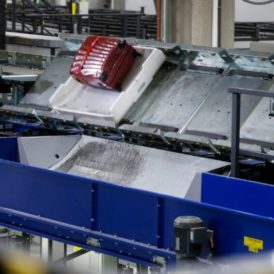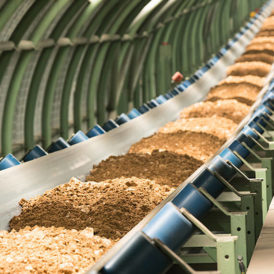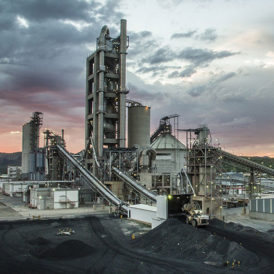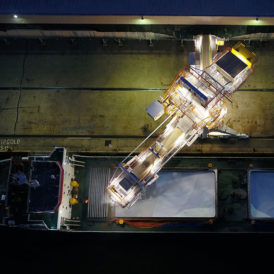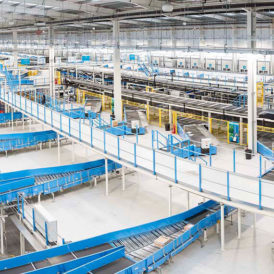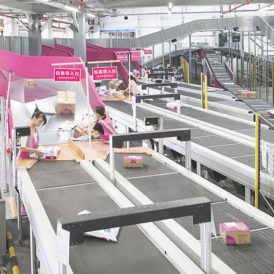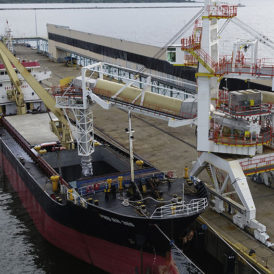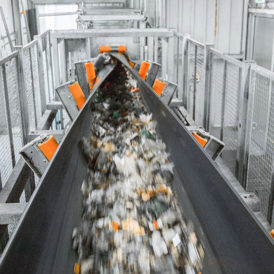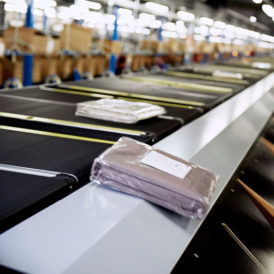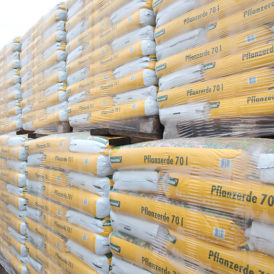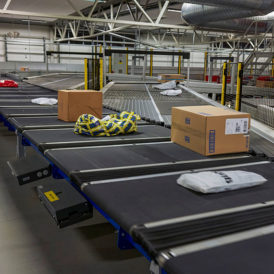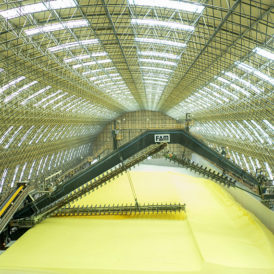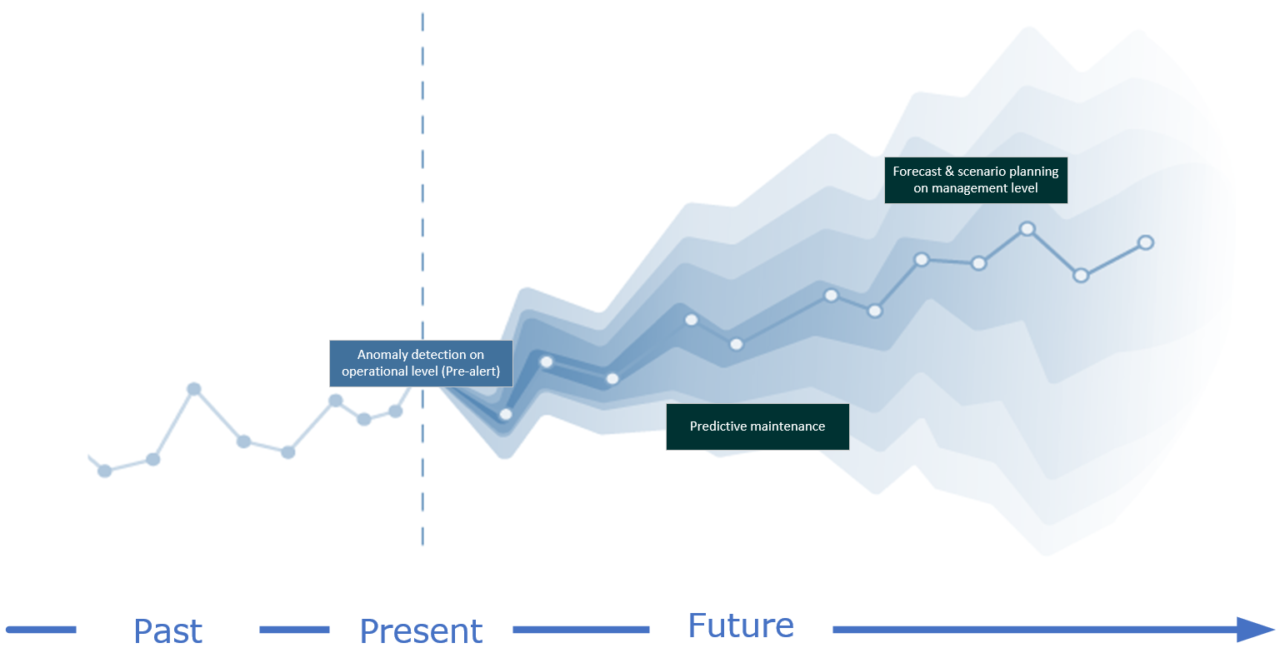By Per Engelbrechtsen
As a baggage handling manager, cast your mind back to 10 years ago and ask yourself how you looked at improving your baggage handling operations with a limited budget. Your attention would have turned immediately to the physical limits of yo
ur operations. The chutes. The sorters. The conveyor belts. You’d be thinking that you needed to add more equipment to your system.
A decade on and the focus has changed. Technology
is the backbone of the aviation sector as airports look to digitalisation as a means of optimising every system within their operations, including their baggage handling system (BHS). And nothing has underlined just how critical digital technology is to both our working and everyday lives than the global pandemic.
Digitalisation of the baggage handling systems
But what do we actually mean when we talk about digitalisation of the Baggage Handing System?
Digitalisation of the BHS is the process of gathering vast amounts of information (or raw data) from the BHS and storing the information digitally. From here, the data is then leveraged to provide valuable insights across the organisation that can help make improvements to reduce costs, reduce risks and increase capacity:
- Maintenance: Data can be sourced and processed in real time for the purposes of predictive maintenance, reducing cost and increasing efficiency.
- Operations: Data can drive recommendations for operational decisions – or even allow the system to carry out decisions automatically.
- Management: Management can rely on real-time data to forecast and plan (for example, are we able to cope with the summer peak this year, based on last year’s statistics and this summer’s forecast? How should we plan the staffing?).
Why data is so valuable to airports and their BHS
Practically, the data collected during the BHS process relates to either its operations or its equipment:
- Operations – how the baggage is processed; or
- Equipment – how well the baggage handling system is operating.
BHS professionals can benefit from data capture, analytics, and other digitalisation efforts without actually having to change the layout of their system. With digitalisation, it is possible to achieve many desired outcomes in the BHS, in particular:
- Improved throughput
- Improved availability of the system
- Less budget spend on maintenance
- Reduction of breakdowns
- Reduced manual handling
In essence, digitalisation will improve throughput, reduce operational risk and lower the cost of each bag handled. Given this potential power of data, it’s not hard to see how valuable it is to an airport’s BHS operations.
The infrastructure behind the digitalisation of the BHS
How is the data collected?
To understand how digitalisation works, the first place to start is by looking at how the data is gathered in a BHS.
Essentially, the data required for digitalisation can be sourced at any point throughout the BHS – from its alarm logs, sensors, event logs and the various data that the BSH captures.
For example, the sortation system that makes up the physical side of a BHS is equipped with various programmable logic controllers, or PLCs. These PLCs detect all kinds of raw data from the system, such as temperature, vibrations, power consumption, processing speed and more.
Another example is the X-ray machines. Inside these units are processors that have the ability to process all kinds of information specifically related to the screening process. The processing of this data is called edge analytics.
BHS professionals can gain valuable insights from these two streams of data (edge analytics and raw data) about the performance of their systems, but at different levels. The X-ray unit, for example, processes the data locally and is able to tell exactly what is wrong. The data from PLC sensors, on the hand, must be processed before any conclusions can be drawn. As such, this is the role of data analytics.
The role of data analytics
The data is collected on premises at the airport and live streamed to a data warehouse. From here, it is enriched, through the skills and know-how of the BHS provider, and then visualised through a cloud solution. In much the same way a crop is transformed into something edible, the data is presented in a way that makes sense to the user. The same data is shown in different visualisations to cater for the different types of jobs within the airport’s BHS.
Through data analytics, certain patterns and performance behaviour starts to reveal themselves. In this way, data can tell us how every component of the BHS is operating, and how the system is processing the baggage – providing transparency throughout the entire BHS.
The four levels of digitalisation of the BHS
In short, every BHS can benefit from digitalisation. But in order to work out where your BHS is right now, let’s take a brief look at the four different levels of digitalisation. These are summarised below:
Digitalisation level
|
What’s involved and what can be achieved
|
| Manual |
The pen and paper method. Servicing the BHS is typically calendar-based. All information is written down and stored manually. Breakdowns are handled as they occur. Repairs or optimisations take place when visibly needed or throughput drops noticeably. |
| Basic (descriptive and diagnostic) |
Sensors detect data from the BHS. Data is stored digitally. Every part of the system is constantly monitored. Data is collected to provide a clear view of system performance. Data serves as an aid to understand what and why something happened. Operators’ work is data-driven. React when digitally predetermined conditions are met. |
| Advanced (predictive) |
Data reveal patterns about general system performance as well as performance in specific situations and what is likely to happen. Algorithms enable predictions on both operational and equipment levels to optimise the system. |
| Full (prescriptive) |
The prescriptive level where the operator knows which action to take to prevent a future problem the system can foresee and which equipment parts need to be exchanged and when. Depending on the level of autonomy, the system can propose an action, inform about an action that has been taken or simply carry out the action autonomously. |
Digitalisation’s power of prediction and prescription
As can be seen, digitalisation of the BHS can be taken to both predictive and prescriptive levels. The digitalisation process eventually reaches a point where data can be combined with experience to recognise patterns the human eye cannot detect. The system can predict what is likely to happen and prescribe what action to take to eliminate a future problem. It is at these points that the experience and expertise of the BHS provider is often needed to take the digitalisation process to higher maturity levels.
